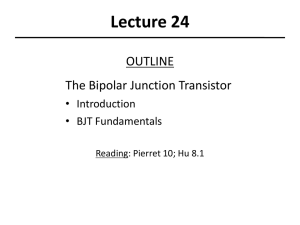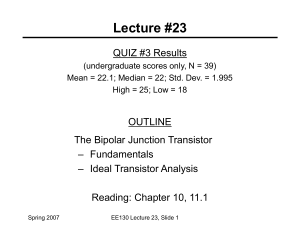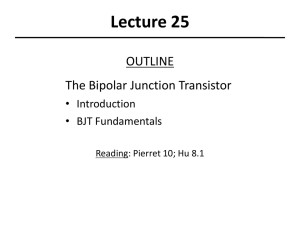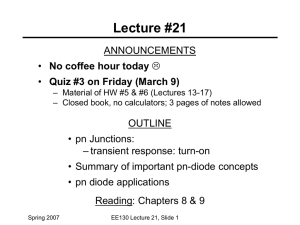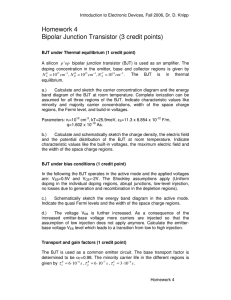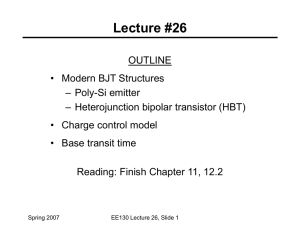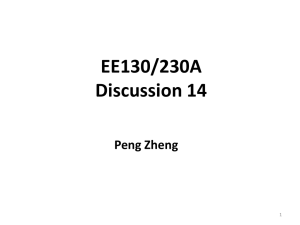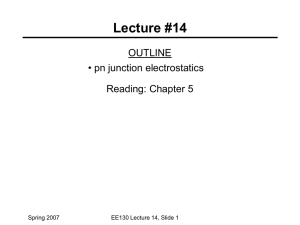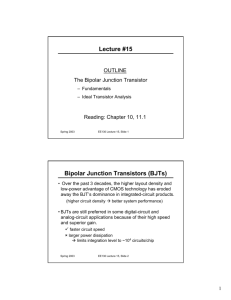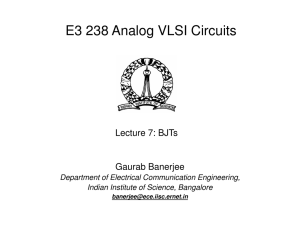Lecture #22 OUTLINE The Bipolar Junction Transistor Reading: Chapter 10
advertisement
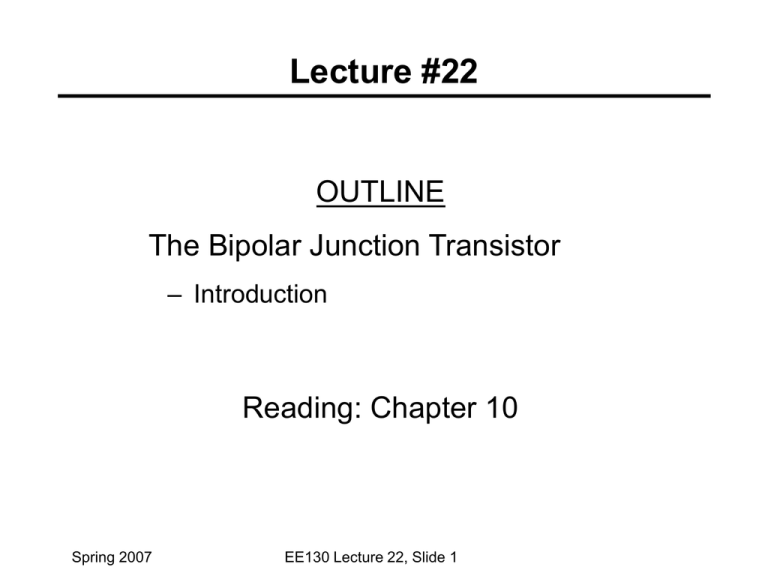
Lecture #22 OUTLINE The Bipolar Junction Transistor – Introduction Reading: Chapter 10 Spring 2007 EE130 Lecture 22, Slide 1 Bipolar Junction Transistors (BJTs) • Over the past 3 decades, the higher layout density and low-power advantage of CMOS technology has eroded away the BJT’s dominance in integrated-circuit products. (higher circuit density better system performance) • BJTs are still preferred in some digital-circuit and analog-circuit applications because of their high speed and superior gain. faster circuit speed larger power dissipation limits integration level to ~104 circuits/chip Spring 2007 EE130 Lecture 22, Slide 2 Introduction • The BJT is a 3-terminal device – 2 types: PNP and NPN VEB = VE – VB VCB = VC – VB VEC = VE – VC = VEB - VCB VBE = VB – VE VBC = VB – VC VCE = VC – VE = VCB - VEB • The convention used in the textbook does not follow IEEE convention (currents defined as positive flowing into a terminal) •Spring We2007 will follow the convention used in the textbook EE130 Lecture 22, Slide 3 Charge Transport in a BJT • Consider a reverse-biased pn junction: – Reverse saturation current depends on rate of minority-carrier generation near the junction can increase reverse current by increasing rate of minority-carrier generation: Optical excitation of carriers Electrical injection of minority carriers into the neighborhood of the junction Spring 2007 EE130 Lecture 22, Slide 4 PNP BJT Operation (Qualitative) “Active Bias”: VEB > 0 (forward bias), VCB < 0 (reverse bias) ICn “Collector” “Emitter” “Base” ICp Spring 2007 EE130 Lecture 22, Slide 5 IC dc IB BJT Design • Important features of a good transistor: – Injected minority carriers do not recombine in the neutral base region – Emitter current is comprised almost entirely of carriers injected into the base (rather than carriers injected into the emitter Spring 2007 EE130 Lecture 22, Slide 6
